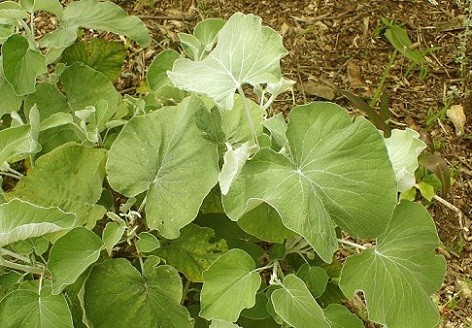Natural Phytochemicals from Helichrysum Populifolium Tackles Antibiotic Resistance in Gonorrhea
Nikhil Prasad Fact checked by:Thailand Medical News Team Dec 13, 2024 7 months, 1 day, 18 hours, 29 minutes ago
Medical News: The alarming rise in antibiotic-resistant Neisseria gonorrhoeae, the bacteria responsible for gonorrhea, has left healthcare systems grappling for solutions. Over 87 million cases of gonorrhea are reported annually worldwide, according to the World Health Organization (WHO), with resistance to current treatments posing a significant challenge. The bacteria’s ability to resist commonly prescribed antibiotics such as azithromycin and ceftriaxone has highlighted an urgent need for alternative therapies.
 Natural Phytochemicals from Helichrysum Populifolium Tackles Antibiotic Resistance in Gonorrhea
Natural Phytochemicals from Helichrysum Populifolium Tackles Antibiotic Resistance in Gonorrhea
In the quest to counteract this global health crisis, researchers from the University of Pretoria’s Department of Biochemistry, Genetics, and Microbiology, and the University of KwaZulu-Natal’s Molecular Bio-Computation and Drug Design Laboratory in South Africa, have turned their attention to nature. Their groundbreaking study explores the potential of compounds derived from the plant Helichrysum populifolium to inhibit bacterial efflux pumps. These pumps are protein structures that bacteria use to expel antibiotics, making them an attractive target for new drugs. This
Medical News report delves into their research findings.
Understanding the Efflux Pump Mechanism
Antibiotic resistance in N. gonorrhoeae is exacerbated by the overexpression of efflux pumps, particularly the MtrCDE pump. This pump is a tripartite protein system that extrudes various antimicrobial agents out of bacterial cells, thereby reducing drug efficacy. By inhibiting these efflux pumps, researchers aim to prolong the effectiveness of existing antibiotics.
The research team investigated three key compounds from Helichrysum populifolium - 4,5-dicaffeoylquinic acid, apigenin-7-glucoside, and carvacrol. Using advanced computational tools like molecular docking and molecular dynamics simulations, they assessed the compounds’ ability to bind and interact with the MtrD protein, a critical component of the MtrCDE pump.
Key Study Findings: Promising Efflux Pump Inhibitors
The study’s findings are both promising and detailed. Each compound displayed varying degrees of binding affinity and stability when interacting with the MtrD protein:
-4,5-Dicaffeoylquinic Acid: This compound demonstrated the strongest binding affinity with a molecular docking score of -8.8 kcal/mol and a binding free energy (BFE) of -54.82 kcal/mol. Its interaction with the MtrD protein involved robust hydrogen bonds and Van der Waals forces, suggesting it could effectively inhibit the efflux pump. However, its stability during simulations was relatively lower compared to other compounds.
-Apigenin-7-Glucoside: With a docking score of -8.6 kcal/mol and a BFE of -47.93 kcal/mol, this flavonoid also showed promising results. Its interactions were characterized by strong hydrogen bonding with key amino acid residues, indicating its potential as an efflux pump inhibitor.<
br />
-Carvacrol: Though it exhibited the lowest binding affinity among the compounds with a docking score of -6.0 kcal/mol and a BFE of -16.69 kcal/mol, carvacrol proved to be the most stable during simulations. Its drug-likeness properties and adherence to pharmacokinetic criteria make it a viable candidate for further development.
Experimental Validation Confirms Potential
To validate their computational predictions, the researchers conducted laboratory experiments. The bis-benzimide dye accumulation assay confirmed that 4,5-dicaffeoylquinic acid significantly reduced dye expulsion, indicating strong efflux pump inhibition. Apigenin-7-glucoside and carvacrol also exhibited inhibition, though to a lesser extent.
Interestingly, carvacrol’s stability and compliance with pharmacokinetic parameters such as solubility, drug-likeness, and blood-brain barrier permeability suggest it might be the best candidate for clinical applications. Its simplicity in structure and fewer pharmacological violations compared to the other compounds add to its potential.
Implications for Antibiotic Resistance
The implications of this study extend beyond gonorrhea treatment. Efflux pump inhibitors could enhance the efficacy of existing antibiotics, reducing the likelihood of resistance. They represent a critical component in the fight against antimicrobial resistance.
Conclusion
In conclusion, the study presents a hopeful narrative in the battle against drug-resistant N. gonorrhoeae. While 4,5-dicaffeoylquinic acid showed the highest binding affinity, carvacrol emerged as the most practical candidate due to its pharmacokinetic advantages and stability. The findings underline the potential of natural compounds in addressing global health challenges.
The study findings were published in the peer-reviewed International Journal of Molecular Sciences.
https://www.mdpi.com/1422-0067/25/24/13310
For the latest on Herbs and Phytochemicals, keep on logging to Thailand
Medical News.
Read Also:
https://www.thailandmedical.news/news/macrolide-resistance-after-covid-19
https://www.thailandmedical.news/news/french-study-finds-that-targeting-dpre1-to-treat-tuberculosis-can-overcome-drug-resistance-issues
https://www.thailandmedical.news/articles/herbs-and-phytochemicals
https://www.thailandmedical.news/articles/stds
